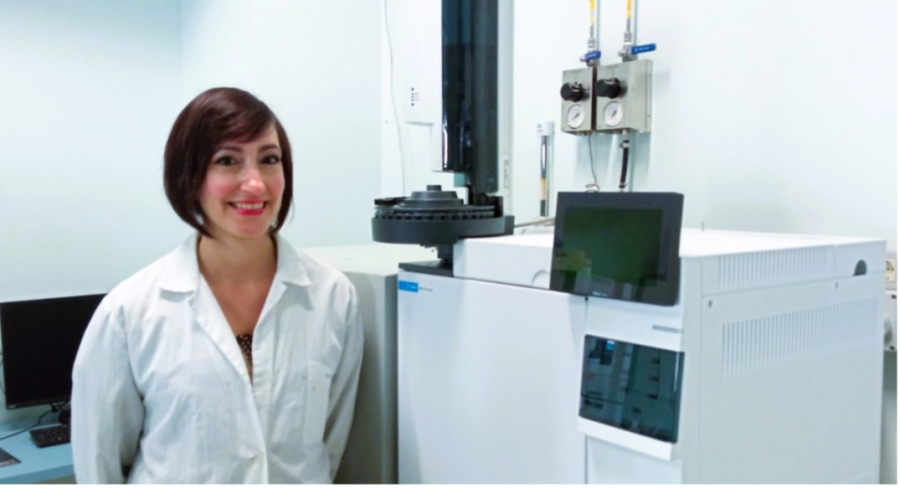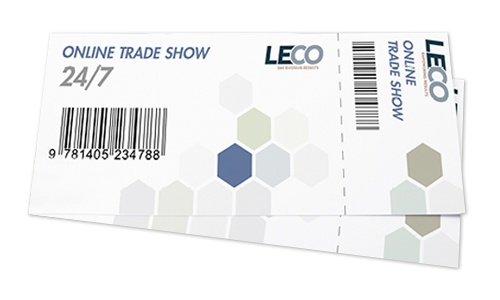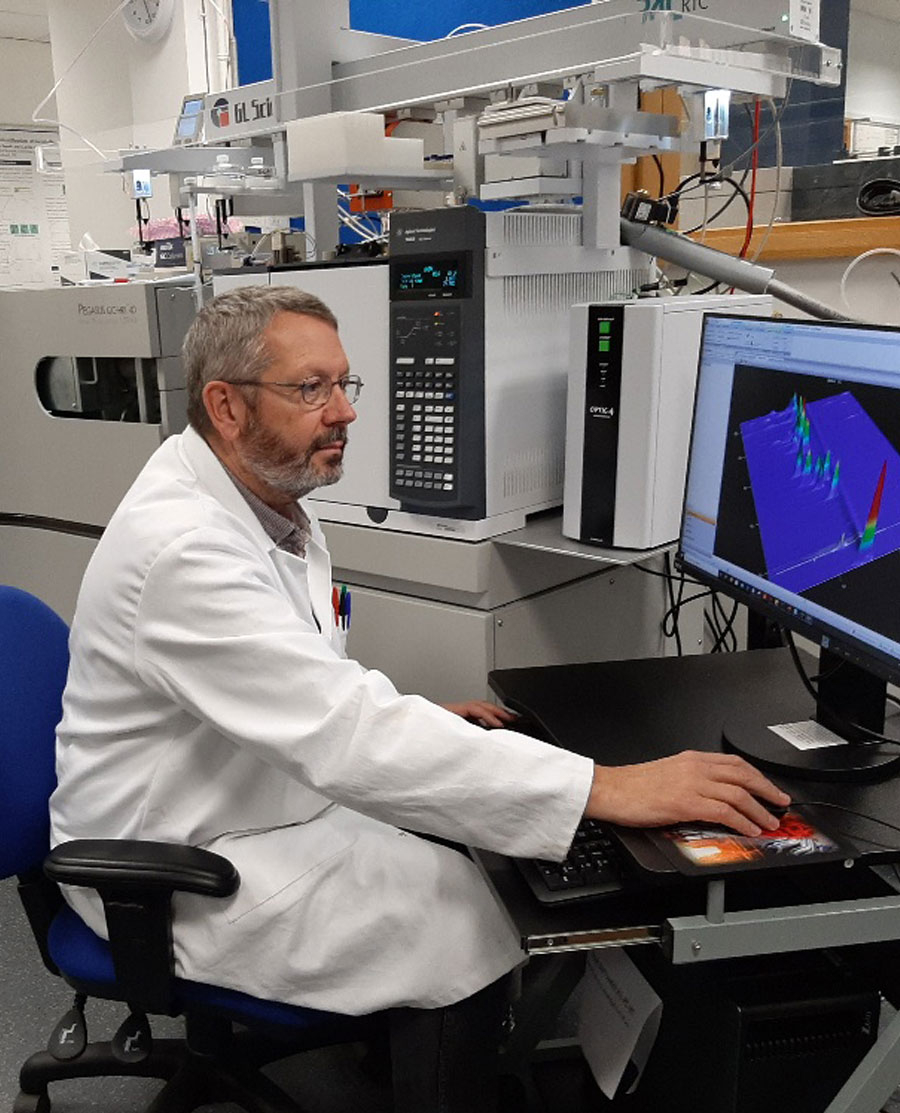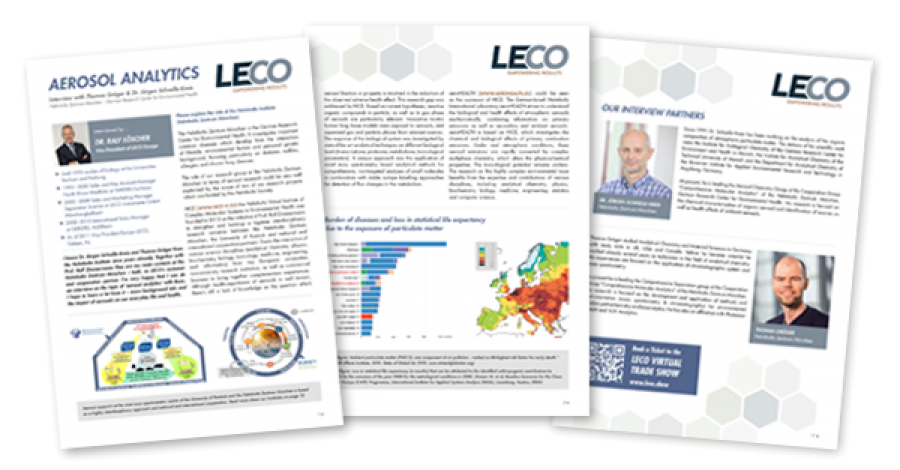
 LECO
Empowering Results
LECO
Empowering Results
Displaying items by tag: Environmental
We started using the LECO PEGASUS® BT GC-TOF mainly for target analysis of aliphatic hydrocarbons on environmental matrices; over time we had the need to develop a method for the qualitative characterization of hop leaves samples for a research project, the ChromaTOF® deconvolution software allowed the identification of several compounds, in particular different terpenes. The Pegasus BT GC-TOF thus proved to be an excellent system, easy to use, with high sensitivity and reproducibility, able to perform both non target and target analysis.
Your TOC analysis has never been easier with LECO’s solutions
Carbon is an essential building block of life on our planet. The amount of Carbon present is an important factor in soils and agriculture samples.
The determination of TOC in solids has recently become ever more important, not just for evaluating wastes but TOC content measurements are also an important aspect of assessing soils.
The Carbon present in soil organic matter is referred to as organic Carbon. Soil organic Carbon is a vital component of productive agriculture. In addition sequestration of Carbon in agricultural soils has been recognised as a tool to mitigate climate change.
LECO provides innovative and timesaving analytical instrumentation for the analysis of organic Carbon content.
Specific Advantages Including
- Market leading analytical performance
- Simplified sample preparation
- Robust & reliable instrumentation
- Unsurpassed instrument flexibility
- Adhering to all the current standards, such as ISO 10694, BS EN 17505 and EN 15936
Instrument Portfolio for TOC Analysis
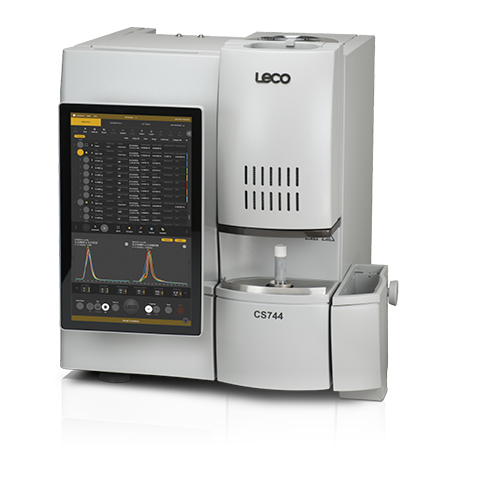
CS744 // Carbon analysis by combustion
Redefine the way you determine carbon in soils and plant tissues with our 744 series. Using extensive customer feedback and innovative engineering, the 744 takes advantage of our immersive CORNERSTONE® brand software platform and a number of features, ...
... such as an improved IR cell design and available automation, come together to increase usability, lab productivity, and lower your cost-per-analysis.

RC612 // Multi-Phase Carbon And Water Determination
Get fast, reliable carbon and water determination with our RC612. The RC612 is a resistance furnace multiphase carbon and moisture determinator which quantifies the carbon and moisture present in soils and plant tissues and illustrates the source of several types of carbon.
The RC612 features a state-of-the-art furnace control system, which allows the temperature of the furnace to be stepped and ramped from near ambient to 1,100 °C, in either oxidative or reductive carrier gas. The RC612 utilizes an afterburner furnace that ensures complete combustion of volatile species released at lower primary furnace temperatures.
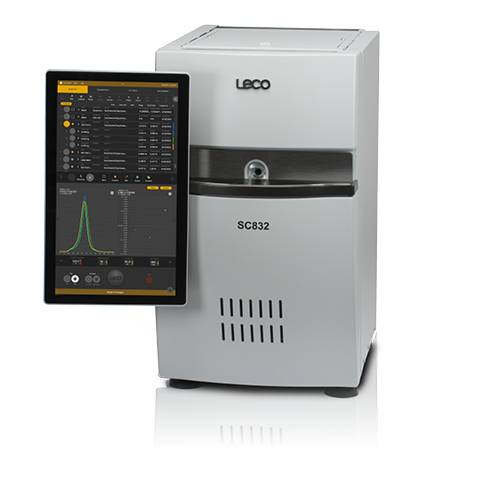
SC832 // Sulfur And Carbon Analysis
LECO’s 832 series of Elemental Determinators are specifically designed to perform carbon and sulfur analysis of soil, plant tissue and other organic and some inorganic materials. The 832 series is a valuable resource for any laboratory needing fast and accurate analysis.
Request SC832
Methods of TOC analysis include
1. Acid Digestion Method
The most common method for determining TOC is the acid digestion method. By acid treating a sample, usually with hydrochloric acid, which is strong enough to react with inorganic carbonates but does not react much with organic Carbon, the inorganic carbonate species within the sample will effervesce as Carbon dioxide. The acid-treated sample and a non-acid-treated sample can both be analyzed using either the LECO C744 series or LECO C832 series for Carbon content. The untreated sample would indicate the total carbon content, while the acid-treated sample’s Carbon content would be the remaining organic Carbon content. The difference between the two samples would be the total inorganic Carbon (TIC) content.
2. Temperature Dependent Method
Another Carbon determination method is temperature dependent. With the temperature dependent method, samples do not need to be pretreated. Organic Carbon combusts to CO2 between 150 °C and 450 °C, while inorganic species combust below 1,000 °C. The RC612 resistance furnace multiphase Carbon and moisture determinator performs this analysis by using a two-step temperature ramping at 450 °C and 1,000 °C without any acid pretreatment of the samples. The CO2 gases are swept through to an NDIR at 450 °C and again at 1,000 °C to determine the TOC and TIC in the sample.
For a more comprehensive exploration of these two methods, as well as an in-depth comparison of LECO instrumentation, please contact us:
On-demand Presentation // Watch the recorded Webinar
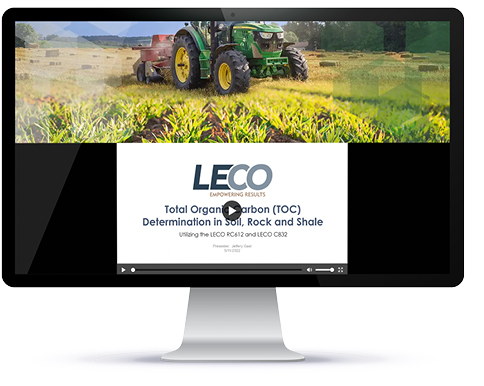
Total Organic Carbon (TOC) Determination in Soil Using Acid Treatment and Temperature Differentiation
Presented by Jeffery Gast
The presentation will outline TOC determination in soil using two different approaches. First, we will explore the use of acid treatment of the soil to remove carbonates followed by analysis using conventional combustion techniques. Next, we will explore using a ramped furnace temperature approach to differentiate organic and inorganic carbon species. TOC results from both approaches will be presented.
Publication Library
Dive deeper into TOC analysis
Enhance your knowledge with our selection of publications. Discover techniques, comparisons, and applications in our downloadable resources, gaining valuable insights and enriching your understanding of Total Organic Carbon (TOC) analysis.
Click to download app note
- "Temperature-Dependent Determination of Total Organic Carbon (TOC) in Soil, Rock, and Shale" using RC612
- "Determination of Total Organic Carbon in Soil, Rock, and Shale by Acid Digestion and Combustion" using 832 Series
Click to download poster

If you want to learn more about our products and solutions for TOC analysis, book a free ticket to our Virtual Trade Show, or schedule an online demo for a deeper insight in our instruments.
Your TOC analysis has never been easier with LECO’s solutions
Carbon is an essential building block of life on our planet. The amount of Carbon present is an important factor in soils and agriculture samples.
The determination of TOC in solids has recently become ever more important, not just for evaluating wastes but TOC content measurements are also an important aspect of assessing soils.
The Carbon present in soil organic matter is referred to as organic Carbon. Soil organic Carbon is a vital component of productive agriculture. In addition sequestration of Carbon in agricultural soils has been recognised as a tool to mitigate climate change.
LECO provides innovative and timesaving analytical instrumentation for the analysis of organic Carbon content.
Specific Advantages Including
- Market leading analytical performance
- Simplified sample preparation
- Robust & reliable instrumentation
- Unsurpassed instrument flexibility
- Adhering to all the current standards, such as ISO 10694, BS EN 17505 and EN 15936
Instrument Portfolio for TOC Analysis

CS744 // Carbon analysis by combustion
Redefine the way you determine carbon in soils and plant tissues with our 744 series. Using extensive customer feedback and innovative engineering, the 744 takes advantage of our immersive CORNERSTONE® brand software platform and a number of features, ...
... such as an improved IR cell design and available automation, come together to increase usability, lab productivity, and lower your cost-per-analysis.

RC612 // Multi-Phase Carbon And Water Determination
Get fast, reliable carbon and water determination with our RC612. The RC612 is a resistance furnace multiphase carbon and moisture determinator which quantifies the carbon and moisture present in soils and plant tissues and illustrates the source of several types of carbon.
The RC612 features a state-of-the-art furnace control system, which allows the temperature of the furnace to be stepped and ramped from near ambient to 1,100 °C, in either oxidative or reductive carrier gas. The RC612 utilizes an afterburner furnace that ensures complete combustion of volatile species released at lower primary furnace temperatures.

SC832 // Sulfur And Carbon Analysis
LECO’s 832 series of Elemental Determinators are specifically designed to perform carbon and sulfur analysis of soil, plant tissue and other organic and some inorganic materials. The 832 series is a valuable resource for any laboratory needing fast and accurate analysis.
Request SC832
Methods of TOC analysis include
1. Acid Digestion Method
The most common method for determining TOC is the acid digestion method. By acid treating a sample, usually with hydrochloric acid, which is strong enough to react with inorganic carbonates but does not react much with organic Carbon, the inorganic carbonate species within the sample will effervesce as Carbon dioxide. The acid-treated sample and a non-acid-treated sample can both be analyzed using either the LECO C744 series or LECO C832 series for Carbon content. The untreated sample would indicate the total carbon content, while the acid-treated sample’s Carbon content would be the remaining organic Carbon content. The difference between the two samples would be the total inorganic Carbon (TIC) content.
2. Temperature Dependent Method
Another Carbon determination method is temperature dependent. With the temperature dependent method, samples do not need to be pretreated. Organic Carbon combusts to CO2 between 150 °C and 450 °C, while inorganic species combust below 1,000 °C. The RC612 resistance furnace multiphase Carbon and moisture determinator performs this analysis by using a two-step temperature ramping at 450 °C and 1,000 °C without any acid pretreatment of the samples. The CO2 gases are swept through to an NDIR at 450 °C and again at 1,000 °C to determine the TOC and TIC in the sample.
For a more comprehensive exploration of these two methods, as well as an in-depth comparison of LECO instrumentation, please contact us:
On-demand Presentation // Watch the recorded Webinar

Total Organic Carbon (TOC) Determination in Soil Using Acid Treatment and Temperature Differentiation
Presented by Jeffery Gast
The presentation will outline TOC determination in soil using two different approaches. First, we will explore the use of acid treatment of the soil to remove carbonates followed by analysis using conventional combustion techniques. Next, we will explore using a ramped furnace temperature approach to differentiate organic and inorganic carbon species. TOC results from both approaches will be presented.
Publication Library
Dive deeper into TOC analysis
Enhance your knowledge with our selection of publications. Discover techniques, comparisons, and applications in our downloadable resources, enriching your understanding of Total Organic Carbon (TOC) analysis. Gain valuable insights by filling out our form to access the download files.
Download App Note
- "Temperature-Dependent Determination of Total Organic Carbon (TOC) in Soil, Rock, and Shale" using RC612
- "Determination of Total Organic Carbon in Soil, Rock, and Shale by Acid Digestion and Combustion" using 832 Series
Download Poster

If you want to learn more about our products and solutions for TOC analysis, book a free ticket to our Virtual Trade Show, or schedule an online demo for a deeper insight in our instruments.
University of Southampton
"In 2019 EPSRC funded our vision for a regional Centre of Excellence (CoE) in 2 dimensional gas chromatography and mass spectrometry. This Regional CoE, initially embracing the Universities of Bath, Portsmouth, Southampton, and Swansea, will significantly drive discovery, characterisation and quantification of new modalities, delivering a step change in capability for detection and identification of new species that cannot be separated and determined by 1D GC alone.
LECO’s Pegasus HRT 4D GC×GC-TOFMS and the benchtop BT4D GC×GC-TOFMS, both with extensive automated sample handling capability were delivered in late 2019 and early 2020. Installation of these state-of-the-art instruments was complicated by Covid-19 and lockdown 1.0. With such complex instrumentation, and application areas, effective training was key; here LECO took the initiative and provided both bespoke local and on-demand online training.
The level of service support and close collaborative relationship with LECO (applications team and account manager) has been first rate. Both systems can now be operated remotely, enabling high level users from across the South West region to access the instrumentation and allow many complex questions to be probed. Our work covers a vast array of application, e.g. petrochemical, environmental and metabolomics. The data sets are rich and complex, yet simplified by a user friendly software interface. Compared to 1D-GC, the 4D systems provide an astonishing number of additional analyte identifications, giving us deeper insight and understanding of the samples. Combining LECO’s high resolution mass spectrometry with comprehensive gas chromatography, multiple sample handling options such as SPME, Pyrolysis and TD along with full automation has created a world class laboratory of which we are all very proud."
Dr. Ralf Löscher, Vice President of LECO Europe, talks to Thomas Gröger and Dr. Jürgen Schnelle-Kreis from the Helmholtz Zentrum München – the German Research Center for Environmental Health to learn about the impact of aerosols on our everyday life and health and gain some background information on their work.

The recent eSeminar series on SepScience.com covering LECO’s solutions for Food and Environmental Analysis is now available as an on-demand version. The talks feature topics around the challenging field of FOOD analysis as well as the ENVIRONMENTAL analysis of the thousands of chemicals present in our air, land and water supplies.
Or visit our New Virtual Trade Show
Please join us for two upcoming eSeminars on SepScience.com. We present how state of the art LECO GC-TOF-MS and GC×GC-TOF-MS technologies can dramatically enhance your applications for Food Analysis (9th June) and Environmental (11th June).
Click to register now!
Today, 20th May, is UN World Honey Bee Day. The honey bee is an important pollinator species that contributes an estimated $15 billion a year to the US economy through crop pollination and £690 million to the UK economy. Honey bees are also important wild pollinators, and play a key role in maintaining biodiversity and ecosystem services in many ecosystems.
Fireworks are a staple of America’s Independence Day celebrations. It is estimated that 16,000 fireworks displays are held in the United States each year and American consumers will spend more than $1 billion in firework sales to mark the holiday! Beyond a big bang and bright lights, how do these fireworks affect the environmental world around them? LECO’s world headquarters are located in Saint Joseph, Michigan, a beach town on Lake Michigan where fireworks are a prominent backdrop to the 4th of July celebration. Last summer, our applications lab thought it would be a worthwhile and interesting experiment to test the water surrounding the firework launch spot to explore if there were any short-term environmental impacts. The influx of tourists to the Lake Michigan beaches during the holiday is sure to contribute chemicals from personal care products (sunscreen and insect repellent) to the water as well. Evaluating these potential contaminants surrounding the July 4th holiday was the objective of this study.
The analysis was conducted by taking water samples from three different places along the shoreline; the fireworks launch location off the pier, as well as two local beaches close to the launch site. This was done on July 2nd as well as on July 4th (an hour after the fireworks show) to provide an accurate measurement. LECO’s Pegasus HRT+ 4D system was used to analyse the water samples, which offers comprehensive two-dimensional gas chromatography coupled to high-resolution time-of-flight mass spectrometry (GC×GC-HRTOFMS). GC×GC-HRTOFMS proved a powerful tool for exploration as it provided a full non-targeted analysis of the water samples before and after the fireworks show, clearly demonstrating the chemical differences between the two. GC×GC-HRTOFMS was also able to pinpoint contributions to the environmental pollution that occurred as a result of these pyrotechnic displays and the increased human traffic near the water sampling sites.
So what happened to the water quality of Lake Michigan from the increased tourism and fireworks? The results may surprise you…
Frank Dorman, an Associate Professor of Biochemistry and Molecular Biology at Penn State University, spoke at our ASMS breakfast seminar about his experience using our Pegasus BT 4D benchtop GC×GC-TOFMS to analyze environmental contamination in the Susquehanna river.
